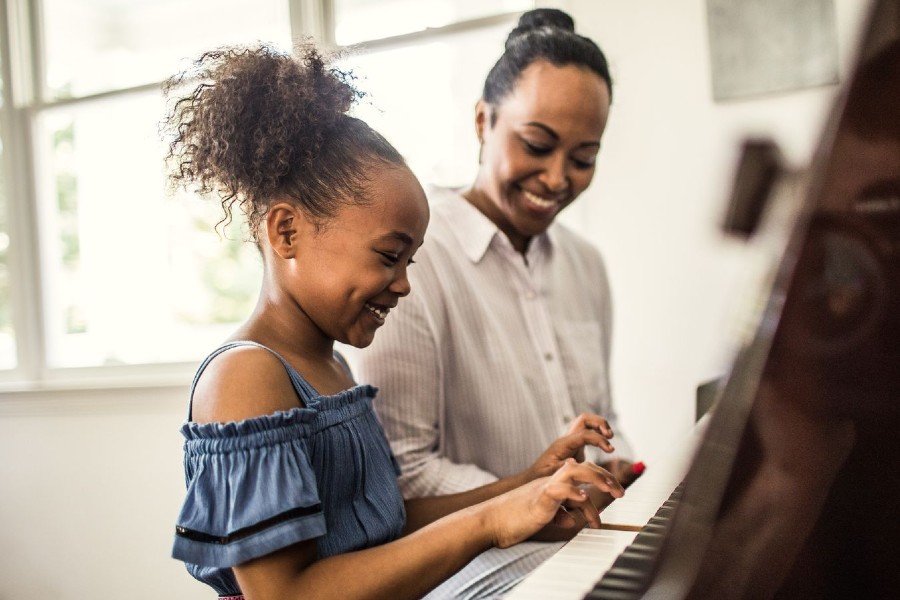
Buying a used or pre-owned piano at piano store San Diego can be a great way to get a high quality instrument at a more affordable price.
However, there are several important things you’ll want to carefully inspect and look out for when evaluating a used piano. Properly examining the physical condition and playing ability of the piano will help ensure you don’t end up with an instrument that needs excessive repairs or has significant issues affecting sound and playability.
Things to Look For in a Used Piano
When examining the outside of a used piano, look carefully at the condition of the finish and cabinet. Are there any scratches, chips, or fading? Also inspect the tightness of joints and hardware. Loose joints can cause instability and wobbling, while loose hardware can lead to further damage. Take a close look at the condition of the keys and action, testing each key if possible. You want the keys to play smoothly and evenly from top to bottom. Listen to the sound of notes across the piano’s range, making sure the notes are clear and consistent in tone. Check that the pedals and dampers are working properly and not squeaking. Also look for any evidence of past repairs or damage.
Inspecting the Interior
It’s important to look inside the piano as well. Inspect for signs of rust, loose fittings, or other damage. Examine the pinblock to ensure the tuning pins are not loose or cracked. Take a look at the hammers and dampers are they worn but still functioning or in need of replacement? Check that all of the piano strings are intact, with no broken or loose wires, which would affect the tone and tuning stability. Several broken strings could indicate the plate or frame has issues. Make note of any apparent repairs done inside the piano. Evidence of extensive repairs might raise concerns about the instrument’s integrity and longevity. Taking the time to inspect the interior mechanics will allow you to identify any lurking problems and estimate the degree of restoration needed to return the piano to proper functioning condition.
Testing the Sound
Of course, the real test of a used piano is how it sounds. Play notes at different volumes, listening for evenness and consistency. Check that sound transitions well across the piano’s register changes. Try the pedals and listen for extraneous squeaking or rattling while playing. Listen closely for any odd buzzing noises while playing, which may indicate problems like loose fittings, hammers hitting strings improperly, or other parts in need of repair or replacement. Check that notes have a nice clear, resonant tone without unwanted vibrations or strange overtones. Have both the buyer and seller play the piano to get different dynamics and techniques. The piano should respond consistently regardless of who is playing. Take your time playing and listening to the piano to get a good sense of tonal quality and note any unevenness, roughness, or dead spots requiring further attention. The sound is a good indicator of how well the internal mechanisms are functioning.
Signs of Wear vs. Damage
It’s important to distinguish between normal wear and more serious damage when inspecting a used piano. For example, minor age cracks in the wood finish may just add character, whereas structural cracks in the frame or body can affect integrity and sound. Slightly worn ivories are expected on an older piano, but missing or severely damaged keys would be problematic. But excessive wear, deep grooves, chips, or missing key coverings would impact playability. A few stuck or dead notes can be individually repaired, but a keyboard with multiple unresponsive keys points to pervasive issues. Noticeable but superficial scratches or scuffs on the case aren’t worrisome, but gouges or other signs of mistreatment raise red flags. Signs of routine maintenance like tight fittings, clean action, and good strings show a piano was well cared for. Serious sluggish action, extensive rust, or fouled, broken strings indicate neglect. Taking time to discern normal aging from excessive wear and damage will help determine if a used piano is reasonably well-preserved or potentially unusable.
Asking Questions
Be sure to ask the seller questions about the piano’s history. How many previous owners were there? Has it been regularly tuned and maintained? Why are they selling? This context will help you spot red flags and understand any issues. The seller should disclose any known problems or repairs needed. Be wary if the seller seems evasive, unsure, or reticent to offer details about the piano’s condition and background. You want to deal with a seller who is transparent about the instrument’s positives and flaws. Ask if original paperwork about the piano’s provenance exists. Getting the full story will aid you in determining if the asking price reasonably aligns with the used piano’s history and current state.
Consider a Professional Inspection
Especially if you are not highly experienced with evaluating pianos, it is wise to hire a professional piano technician to inspect it prior to purchase.They will be able to identify wear, damage, and defects that could affect playability, sound quality, tuning stability, and longevity. The technician can assess things like the integrity of the frame, proper functioning of the action mechanism, condition of the strings, and status of the soundboard that you may not feel qualified to judge on your own. They are also familiar with the repair needs and quirks specific to different piano brands and models. The technician can play the piano and listen for nuances the typical person may not catch. Most importantly, a technician can provide an accurate estimate for any restoration work, repairs, or part replacements needed to get the piano into proper functioning order. This professional insight allows you to go into the purchase with your eyes wide open. It will help you determine if the asking price realistically aligns with the piano’s true condition. This will avoid nasty and expensive surprises down the road.
Buying a used piano can be a great way to get an affordable, quality instrument. Just be sure to carefully inspect and test the piano yourself, ask the seller plenty of questions, and consider having a professional technician examine the piano to reveal any hidden issues beforehand. With proper diligence, you’ll be able to determine if a used piano is right for you and a good value, allowing you to enjoy playing it for years to come.
- Lincoln Theodore Monroe Andrew Perry, “Stepin Fetchit,” The Rise And Fall Of The First Black Super Star, 1902 – 1985
- Sponsored Love: AARP Plan F Benefits, What You Need To Know?
- Discover 5 Reasons Of Class Events Is Perfect For Your Special Day
- Jean Shafiroff Honored At 25th Celebration Of The James Jay Dudley Luce Foundation
- Boston: Smino Honored With Lifetime Achievement Award By Harvard’s Black Men’s Forum
Become a Harlem Insider!
By submitting this form, you are consenting to receive marketing emails from: . You can revoke your consent to receive emails at any time by using the SafeUnsubscribe® link, found at the bottom of every email. Emails are serviced by Constant Contact








